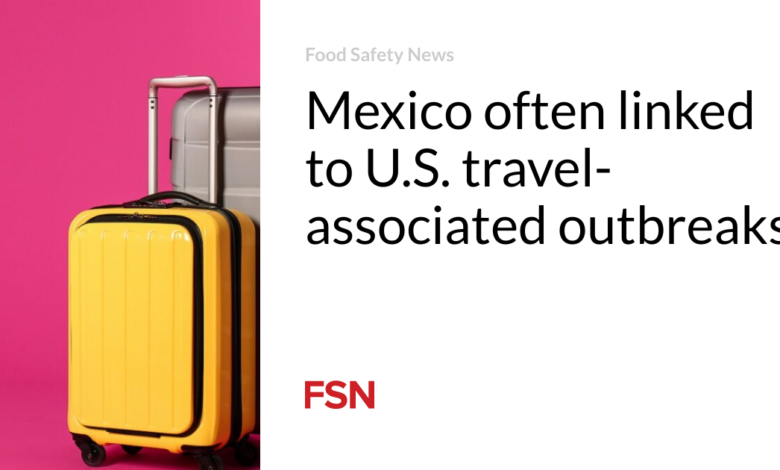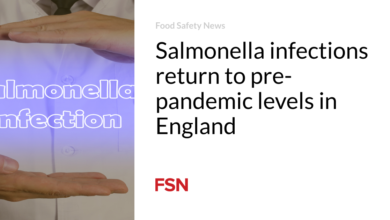Mexico often linked to U.S. travel-associated outbreaks

Researchers have analyzed travel-associated infections in people returning to the United States from abroad.
From 2017 to 2020, the Centers for Disease Control and Prevention investigated 41 multistate outbreaks of non-typhoidal Salmonella and Shiga toxin-producing E. coli (STEC) linked to international travel.
In the same time frame, CDC handled 470 domestic possible and confirmed multiple state outbreaks caused by Salmonella, STEC, and Listeria monocytogenes.
The CDC investigated 30 Salmonella and 11 STEC outbreaks linked to international travel. One thousand sixty-six illnesses occurred among residents of 49 states and the District of Columbia.
The study, published in the journal Epidemiology and Infection, provided details on infections related to travel abroad. It was acknowledged that the number of Salmonella and STEC illnesses was likely underestimated because of self-limiting infections that resolved before returning to the U.S.
Outbreaks linked to popular destinations
Salmonella outbreaks represented eight serotypes: Braenderup, Concord, Enteritidis, Muenchen, Newport, Strathcona, Thompson, and Typhimurium, and were associated with multiple regions. Most outbreaks were linked to destinations in Latin America and the Caribbean.
The 11 STEC outbreaks included four serotypes: O111, O157, O103, and O123/O186, and were all associated with travel to Mexico. Mexico was U.S. travelers’ most common foreign destination from 2017 to 2020.
Salmonella outbreaks ranged from four to 365 ill people, and STEC outbreaks from five to 12 cases. Outbreaks of Salmonella tended to occur year-round, while STEC outbreaks typically began in winter or spring.
Of the 1,066 illnesses, 982 were Salmonella infections. Patients ranged in age from less than one year old to 87. More than 550 were female, seven were hospitalized, and three people died.
STEC outbreaks involved 84 ill people. Patients ranged in age from less than 1 to 90 years old and 50 were female. One person was hospitalized, and another person died.
The age of people who died ranged from 17 to 82. Three had Salmonella Newport infections and one had an O103:H2 infection.
Improving hygiene and food safety standards
Of the 631 people with epidemiological information available, 437 reported international travel. 317 listed travel to Mexico and 81 to the Dominican Republic. All 62 people with STEC infections mentioned going to Mexico.
Salmonella Enteritidis caused all outbreaks linked to the Dominican Republic and Jamaica, and all Salmonella Newport and STEC outbreaks were linked to Mexico. A few outbreaks were linked to travel in Europe, Thailand, and the Philippines, and a Caribbean cruise.
The study used people reporting international travel in the seven days before illness onset as exposure criteria to define travel-associated outbreaks. This may have resulted in the inclusion of people with domestically acquired infections or the exclusion of people with travel-associated infections due to shorter or longer incubation times. Single-state travel-associated outbreaks were not included as data was not available.
Scientists also looked at the antimicrobial resistance patterns of the travel-associated outbreaks.
Researchers said investigating illnesses among returned travelers and collaboration with international partners could result in implementing public health interventions to improve hygiene practices and food safety standards.
“Our findings emphasize that an improved epidemiological understanding of enteric bacterial illnesses linked to international travel might provide insight into developing public health guidance for travelers and healthcare professionals as well as a better understanding of challenges other regions face to preventing enteric illnesses,” they added.
(To sign up for a free subscription to Food Safety News, click here.)

